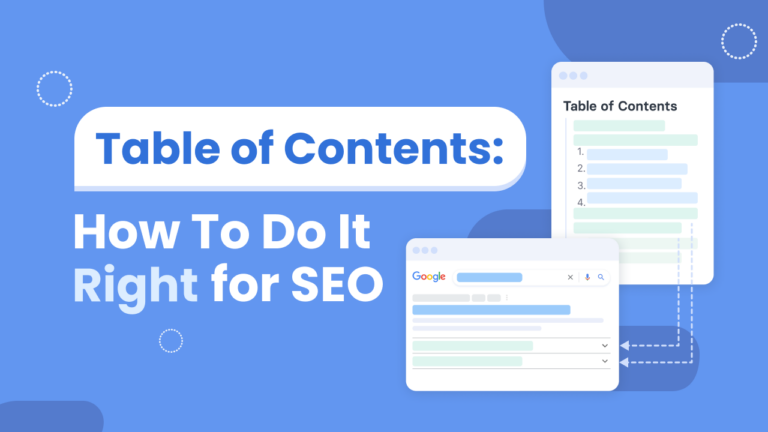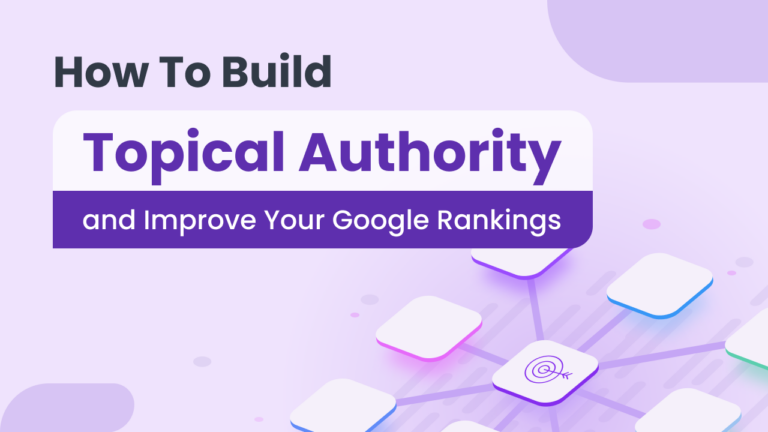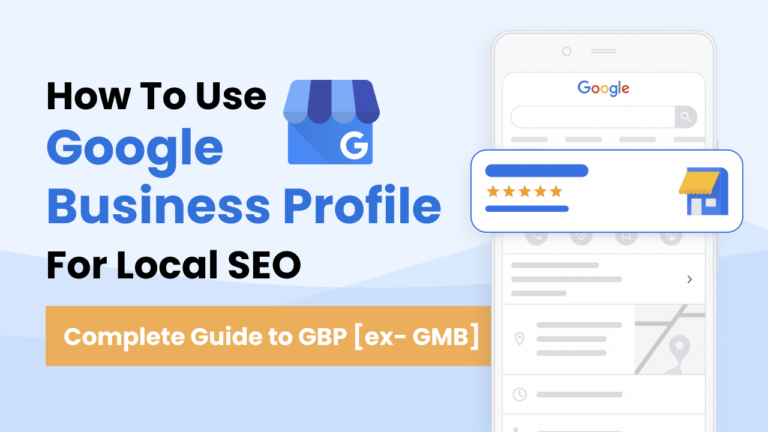Imagine this…
You have to write a 2000-word article on “How to meditate”.
Assume it’s your first time writing about the topic.
You can feel the pressure of wanting to produce the best content.
But you don’t know how to meditate, or the little you know can’t get you to 200 words.
Okay, where do you start?
The best writers organize their thoughts by outlining. It’s the process of planning your SEO copy to show the essential features such as the headlines or paragraphs but not going into much detail.
If you’re assigning the article to a freelancer or team member, outlining is still important. It ensures that the content is stellar and conforms to your expectations.
Today, you’ll get a thorough introduction to outlining. You’ll also learn about creating an SEO-friendly outline because you need to give your article the best chance of ranking well.
Let’s get started:
What Is A Content Outline?
It’s a plan that you use to organize your writing. An outline can include a list of headlines, sub-topics, key points, and data that will make it to the actual article. It can even include topic sentences to serve as the basis for constructing paragraphs.
The level of depth you may want to go into the outline may depend on if you are writing the article or handing it over to someone else. If you are just preparing an outline for another writer, you may only choose to include some key points and headlines.
However, if you’re the writer, you may make it more specific by also using it as a research tool. In this case, you can include any useful information you find from other websites into the outline. It ensures that you don’t have to go back to your sources every time to check what you previously read.
Now, it’s not absolutely necessary to outline. You can fire up your word editor, check the topic and let the ideas flow. Content writing without an outline may be possible for topics that you have deep expertise in. But if you’re finding the writing process difficult, it never hurts to outline the content.
Why Is A Content Outline Important?
Outlining is important for all parties involved in the content creation process. Regardless if you’re the content strategist, content team lead, or writer, you should consider outlining for the following reasons:
- Allows you define the direction of the article, including the topics up for discussion and main ideas;
- Assists in organizing the information in a logical manner;
- Aids in the research process and SEO-optimized content outlines help the article to rank well;
- Ensures that expectations are in line with the final output, which saves on rewriting time and never-ending revisions;
- Helps in paragraph construction by ensuring that each paragraph has a topic sentence and enough supporting sentences;
- Assists the writer in narrowing down their focus to the most important areas and ensures that all the key information has been included for an efficient writing process;
- Shaves off a significant chunk of time from the writing process;
- Promotes the attainment of content strategy goals.
Your SEO writing will be better off with the content outline than without one. So let’s consider elements that should go into the outline:
What Are the Key Elements of A Content Outline?
Here are some key elements of the content outline:
- Headings: The best way to make your article readable and easily scannable is to break it up into sections under clear headings. You should have a hierarchical structure with H1, H2s, H3s, and H4s.
- Topic sentences: The outline can contain a list of topic sentences that will serve as a basis for actual paragraphs.
- Content requirements: The requirements can be posed as “explain this and this, mention this and this, illustrate this and this”.
- Questions to answer: You may also pose questions in the content outline and use them as a basis for writing the rest of the content and paragraphs.
- Main or key points: The content outline can also have main points that should be covered. They may be listed in an orderly way under each heading or paragraph. You may also collect the key points or facts as you go along.
- Statistics, data, and figures: It’s a good idea to include the statistics and data along with their sources to enhance your content writing. It makes it easier to make references in the article during the writing process.
- Introduction & conclusion: The outline can also plan for the writing of the introduction and conclusion. For instance, you can specify what action you want the reader to take after reading the article.
Note that there are no hard and fast rules about what to include. As long the information aids in the content writing process, feel free to include it.
How to Prepare Your Content Outline?
A great writer once said (p.s. Not me), “Give me two hours to write an article, and I would spend one and a half hours planning for it.”
Yes, preparing an SEO content outline will take some of your time, but it’s important to note that this will be time well invested.
So, here is how to undertake the process of preparing the content outline:
1. Make sure you understand all the requirements & expectations
Forget about the content outline for just a minute.
The first thing that you should really do is to understand the overall objectives and requirements.
What is the goal of the article?
If you’re the content strategist, you may need to prepare an SEO content brief. Actually, the content outline should be part of the brief.
The brief gives details about the target audience, brand style, tone, SEO keywords, titles, and word count. We wrote about what should be included in the content brief here.
Now, if you are the writer and the brief has been provided, take note of all the requirements. Read it sentence by sentence, word for word.
Don’t start researching and outlining the article before understanding the overall expectations of the SEO content brief.
2. Research the topic and gather key facts
Even if you know a lot about a topic, kick off the research with the intention to learn as much as you can before you start writing.
You’re not limited to past online articles. The research can encompass podcasts, magazines, books, offline sources, expert interviews, YouTube videos, news reports, and the like.
For instance, if you’re writing an article on Yoga, you can speak to the instructor at your local gym.
Aim to gather fresh facts and unique insights because search engines look for originality when ranking articles.
Don’t rely on your mind to remember all the facts. Organize your research by recording notes for easier referencing during the SEO content writing process.
One way is to list facts under each headline as follows:
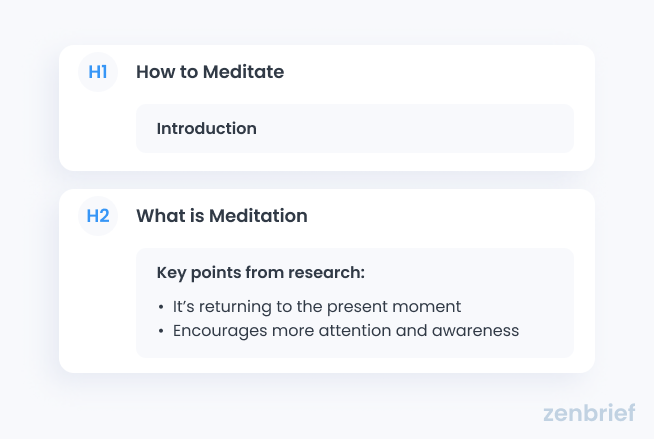
Now, save all your research in a draft document. Additionally, you can use note-taking apps, such as Evernote.
Screenshots can also help too!
Here is a good tip…
Give yourself a time limit for conducting the research. If you don’t have a limit, you may spend too much time on it.
3. Look at competing content to see which topics to cover
As you research, take note of competing content. Ideally, your content marketing goal is to get featured on the first page of Google and drive the most traffic.
Now, looking at the competition entails checking how they have written their articles.
- Are they using videos, checklists, infographics, or images?
- How many words did you write? Is their content thorough, and can you achieve the same depth?
- Which stats have they mentioned?
- Can you also use the same sources?
- Can you find fresh data or facts that competitors have not covered?
As you write SEO content, don’t aim to simply replicate what is already there. Rather, provide new perspectives, insights, and facts. Make your content more thorough and helpful.
4. Check PAAs to find more topics to include
The body of your article should offer information on topics people are interested in. When people need to find information, they ask questions. The good thing is that Google features a list of Frequently Asked Questions around a particular keyword and tries to find quick answers from indexed articles.
You can find these questions in PAA boxes, and they are a gold mine for potential topics to cover. So, head over to Google, and type in your search query:
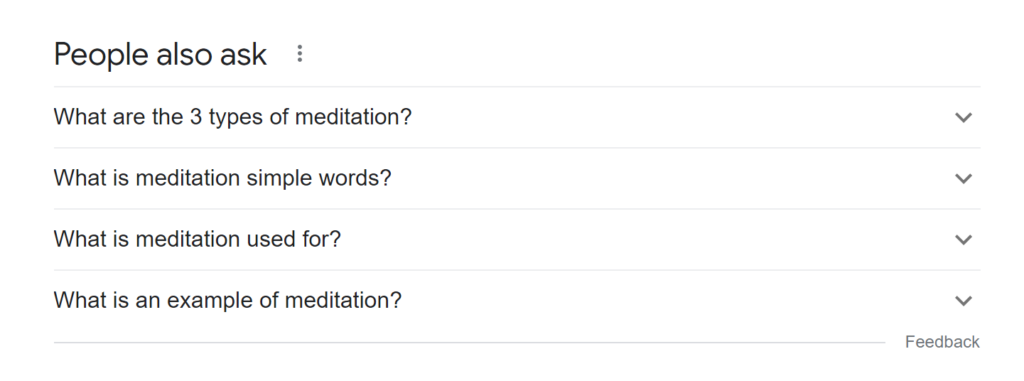
Scroll down until you see the People Also Ask boxes (they are often the third or second result). If you click on any question to expand it, more questions will be dynamically loaded.
The questions you collect can serve as potential headlines. They may help identify areas that you never thought of covering.
5. Develop your body headings
The outline should ideally contain well-thought-out headings that allow the writer to expand on the topic.
Headings must be unique, and to make the content SEO friendly, they should ideally contain the main keywords and semantically related keywords.
Because headings can be at times tricky to write, here are some guidelines to follow:
- Convert questions you have found through research to heading ideas, for instance, “How to meditate” into “Five steps to meditate at home with no distractions.”
- Generate several heading ideas and pick the best;
- Ask “what information should the reader know next” in order to write headings with a logical flow;
- Try to structure headings with the most important ideas and tips at the top;
- Include the main problem or pain point the reader is having in the heading;
- Include the main benefit in the heading.
You can also try out different heading formats such as lists (1,2,3…), steps (step 1, step 2, step 3…), and tips (tip 1, tip 2, tip 3… ).
The headings you write should also follow clear levels, with the most important heading ranking first. For instance, you should have one Heading 1, several Heading 2s. You can then nest heading 3s into heading 2s if appropriate. This makes the page more understandable, and confusing the levels may hurt your SEO writing.
For instance, “Types of meditation” may be a Heading 2, with a series of H3s for each type of meditation.
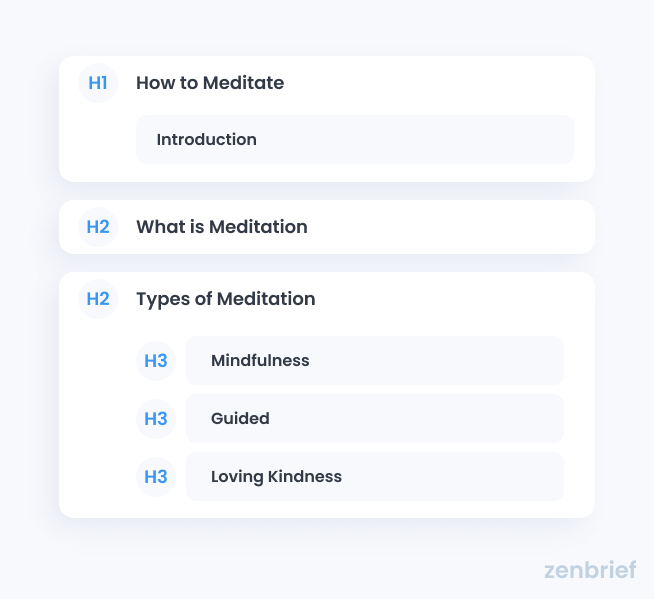
6. Gather statistics & data to support your position
It’s important to include statistics to back up your claims and make your articles more believable. So, how can you gather statistics to include in the article? Here are some pointers:
- Head over to Google and type in your “keyword” + statistics;
- You can filter results per date on Google by selecting Tools and changing the results date;
- Check the results and looking for articles with a compilation of interesting statistics;
- Once you view the article, try to find the original study or report;
- List the statistics along with the URL for easier linking.
In practice, this may look like this:
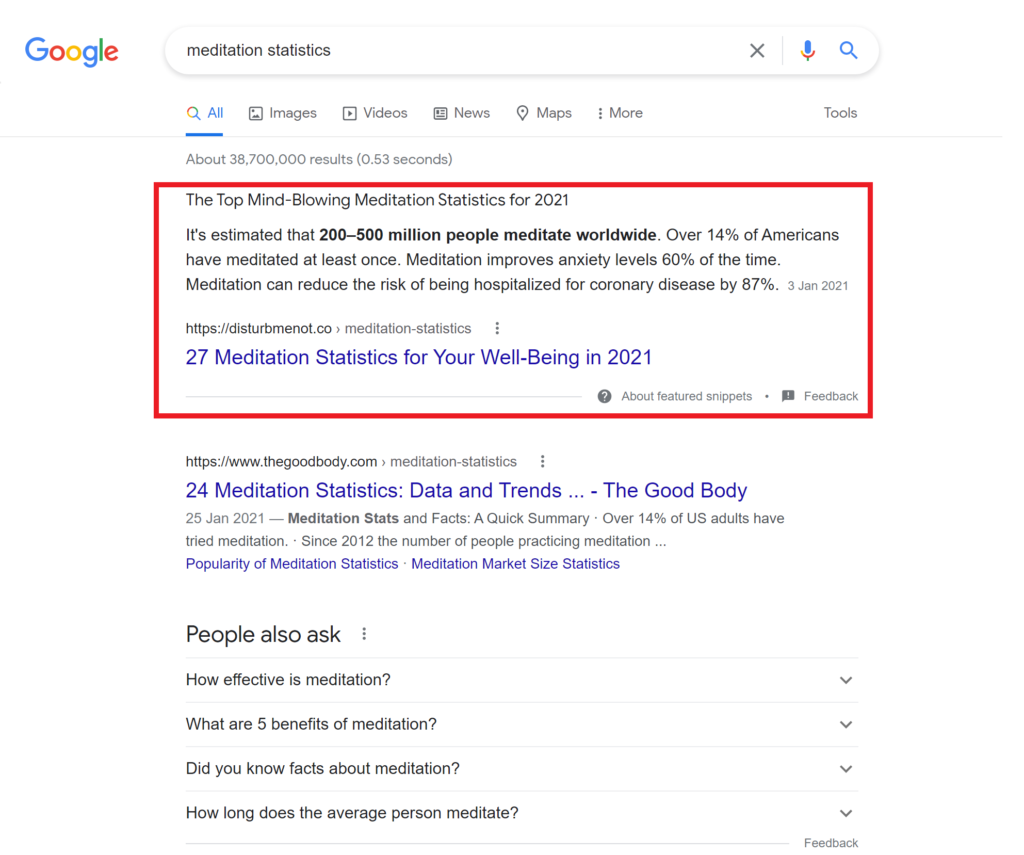
Next, you click the result to see the original blog post.
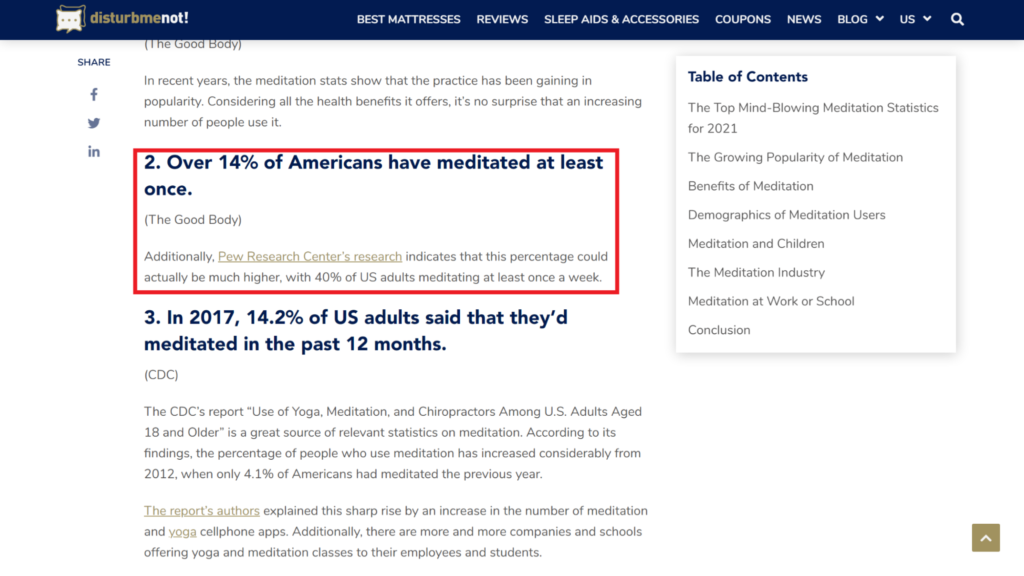
Check for the original source of information to get first-hand data.
You can uncover more statistics that have not been reported in competing articles. An article may have even shared the wrong statistic, resulting in other websites picking up on it.
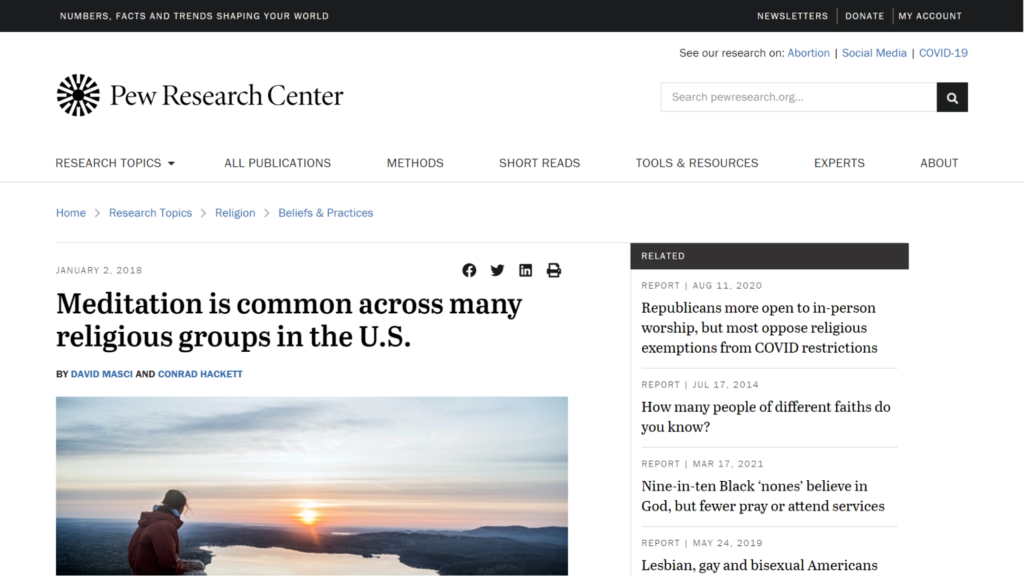
Organize your findings using the following table.
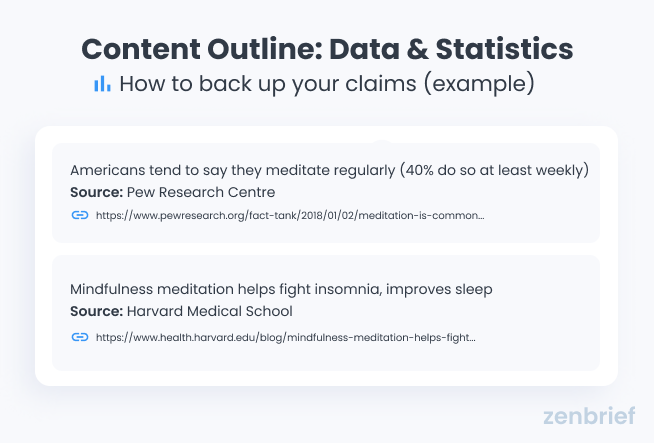
This makes it easier to place your stats where you need them.
7. Paragraph ideation, topic sentences, and supporting sentences
Crafting effective paragraphs is probably something you learned in school. The same principles apply to your content writing.
First, you need a topic sentence. It expresses the main idea or fact. It’s then supported by a series of sentences.
The supporting sentences provide reasons, examples, explanations, data, facts, and any additional information.
Let’s understand this with an example.
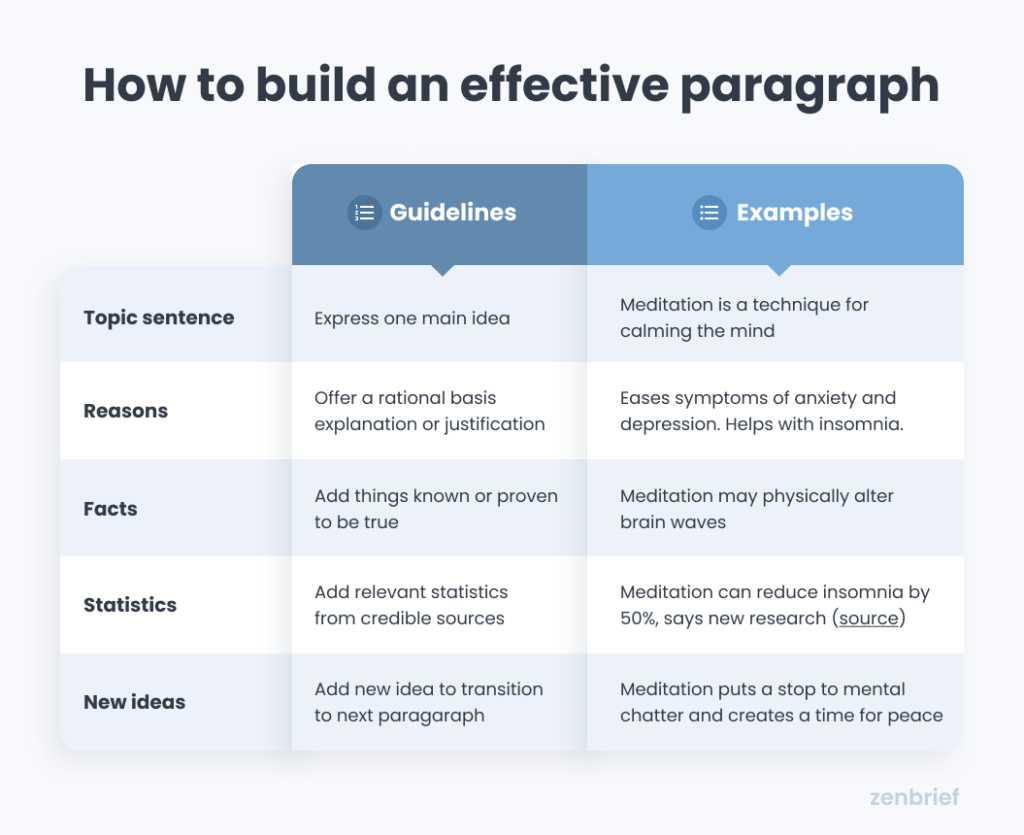
It doesn’t mean that your paragraphs have to be too long. You can still develop paragraphs fully and keep paragraphs within 3 to 5 sentences for easier reading.
If you allow paragraphs to form naturally, just remember that one sentence should ideally express the main idea and be fully developed with supporting sentences.
How to Build An SEO-Friendly Outline: What to Consider
You should be performing the SEO content optimization as you outline the content, not after writing it. For instance, if there are any keywords that need to be included, plan to include them at the outlining stage. If you do this, you won’t have to go back and change sentences to accommodate the keywords. Additionally, distribute relevant keywords to each headline.
Ensure that you’re not just optimizing your content around one main keyword. Look into the possibility of finding more keywords and using keyword clustering to group related keywords. Including secondary keywords in the content increases the page’s relevancy for the target query. An easy way to check for the presence and frequency of the right keywords is to use Zenbrief’s SEO Content Editor.
Consider other SEO optimization tips to improve your articles, such as having a catchy title that draws readers in when they encounter the article on SERP results.
Use external linking to authoritative sources to show Google that you’re sourcing information from high-quality sources. Include images in your blog posts or create unique graphics such as charts. The meta description should be optimized with relevant keywords. It must be catchy to attract more clicks.
Let the Content Outline Guide Your Writing
Once you’re done with your outlining, it’s time to edit the article. Strict editing is often necessary as you may be working without the oversight of an editor.
So, make your final article shine by following these tips:
- Go through the article sentence by sentence, and rewrite all the necessary parts;
- On the second pass, remove excess words and phrases to make the writing tighter. (P.S. you can use the Hemingway Editor to edit for conciseness);
- Use an advanced grammar checker such as Grammarly to check for grammar errors and improve the tone of the article;
Use a text-to-speech reader to “hear the article.” This is a good way to check for the logical flow. On Microsoft Word, you can use the built-in Speak function. On Google Docs, you can use the Read Aloud add-on or Chrome extension.
Example of Content Outline
With all that you have learned, here is an example of a content outline. Remember, it doesn’t have to be pretty. Just make it organized and easy to follow during the writing process.
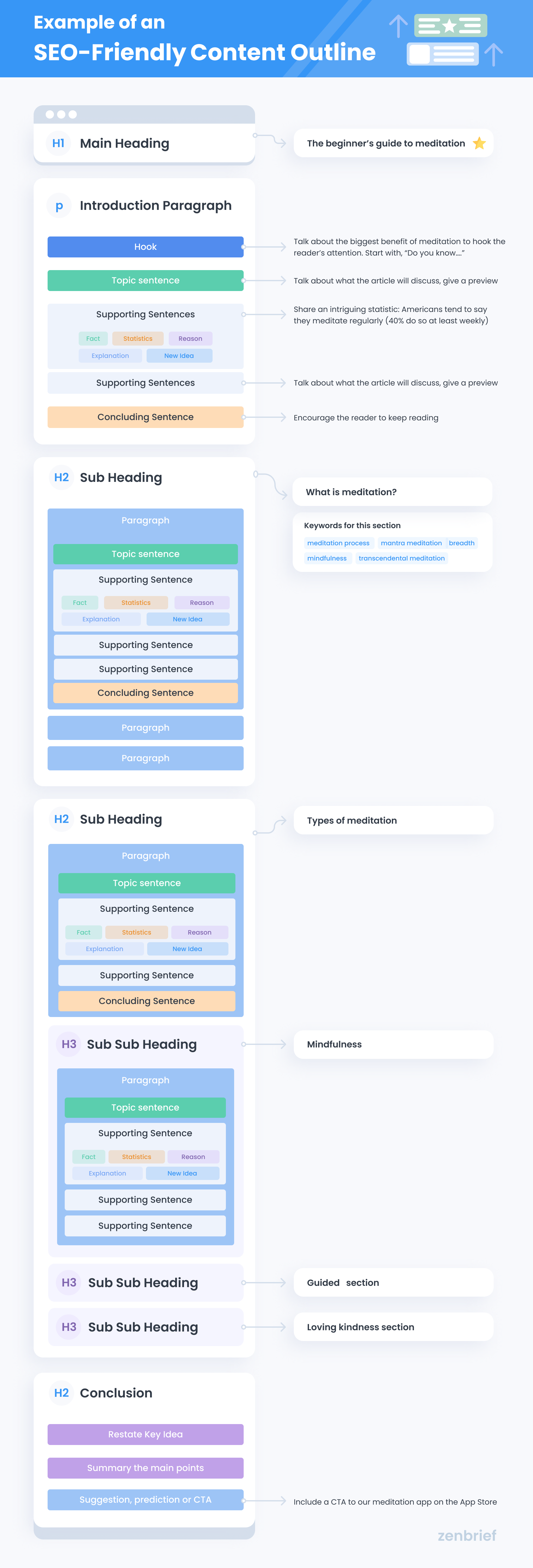
Unlock the Power of AI to Generate Better Content Outlines
Do you want to create better SEO content outlines without the extra hard work?
Automate the process of creating SEO content briefs with Zenbrief. It’s an AI content optimization tool that allows you to generate a content brief automatically for a given topic. Each brief includes a list of keywords and their expected frequency ranges to stay relevant, questions you should answer to address user search intent, external and internal linking opportunities to help you build authority, and an overview of how well your competition is addressing the topic.
The tool automatically extracts your competitor’s outline and makes it easy for you to build your own. Try it out!



